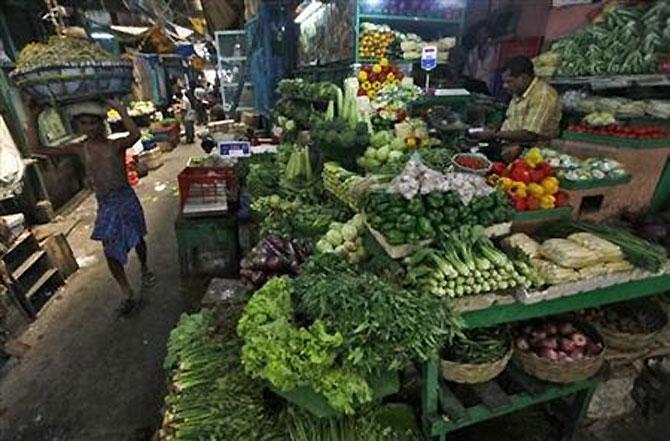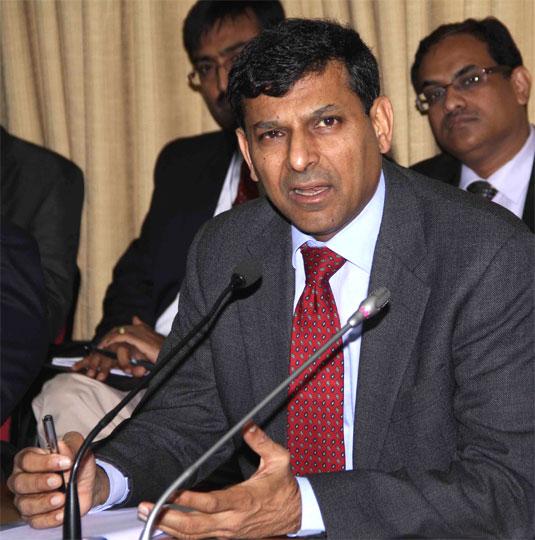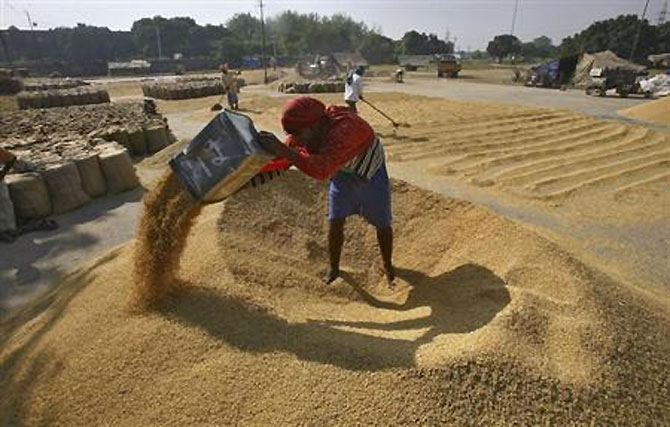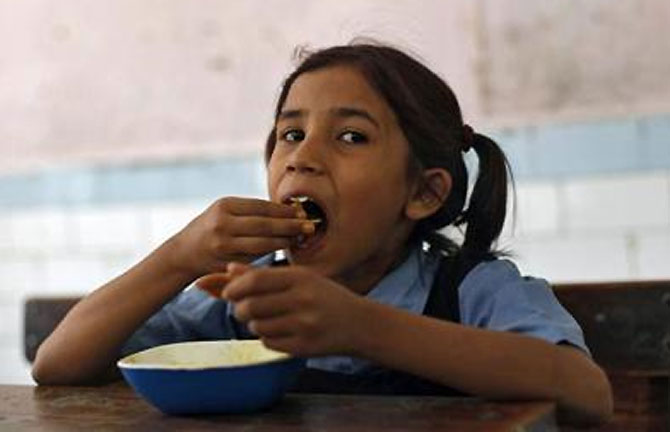 | « Back to article | Print this article |
Inflation: What the government needs to do
The numbers for December’s index of industrial production and January’s consumer price index, released last Wednesday, showed that industrial growth was not happening, while inflation was moderating, albeit at a rather slow place.
The numbers for January’s wholesale price index, released on Friday, provide a somewhat more positive picture as far as the softening of inflation is concerned.
The inflation rate in January was 5.05 per cent -- the lowest in eight months, more than a percentage point below December’s 6.16 per cent and appreciably lower than the seven per cent-plus clocked during September and November 2013.
Click NEXT to read further. . .
Interim Budget 2014-15: Complete Coverage
Inflation: What the government needs to do
A major reason for the divergence between the CPI and the WPI is the former’s higher weight on food items.
On this front, both indices show that the substantial deceleration in vegetable price increases contributed significantly to the softening in headline inflation.
Onions, the main culprit over the past several months, saw their prices increase by a now-negligible 6.6 per cent, while many other past drivers, particularly proteins, have shown considerable moderation over the past few months.
The main driver of food inflation, despite the good monsoons and kharif production, is rice, whose prices rose by 13.4 per cent.
Click NEXT to read further. . .
Interim Budget 2014-15: Complete Coverage
Inflation: What the government needs to do
The point has repeatedly been made, but ignored by the government, that this is one food item whose prices can very quickly be brought under control by releasing even a small portion of the very large stocks it has accumulated.
Its failure to do so is inexplicable.
Moving beyond food, however, the CPI-WPI gap underscores the dilemma faced by monetary policy.
Core CPI inflation -- that without food and energy prices being counted -- persisted at above eight per cent, strongly suggesting that inflationary pressures were still persistent. On the other hand, core WPI inflation (non-food manufacturing), though slightly higher this month, has been at or below three per cent for some time now.
This reflects the relatively weak pricing power of producers of goods, who are unable to pass on the higher prices of their inputs to their customers.
Click NEXT to read further. . .
Interim Budget 2014-15: Complete Coverage
Inflation: What the government needs to do
Taken together with the Index of Industrial Production numbers, this reflects a classic business cycle pattern, in which growth and inflation simultaneously decelerate in the face of worsening demand conditions.
The appropriate monetary response to this is to provide stimulus to demand by lowering interest rates.
However, the stubbornness of core inflation in the CPI, which the Reserve Bank of India is now using as its policy benchmark, points to why the central bank is maintaining its tight monetary stance, which will, quite obviously, further weaken growth impulses.
The divergence can perhaps be explained by the services component of the CPI, whose rate of price increase is closely linked to wage increases, which, in turn, are predominantly driven by food prices.
Click NEXT to read further. . .
Interim Budget 2014-15: Complete Coverage
Inflation: What the government needs to do
If this is the correct explanation, then the economy is caught in the so-called wage-price spiral, to which a tight monetary policy stance is a necessary but insufficient response.
The close correlation between food prices and rural wages certainly supports this explanation and puts the onus firmly on the government to take some immediate steps to relieve food inflation -- sales of rice stocks being a case in point -- apart from the structural measures to improve agricultural productivity that are so necessary.
Otherwise, the fight against inflation may be lost.





